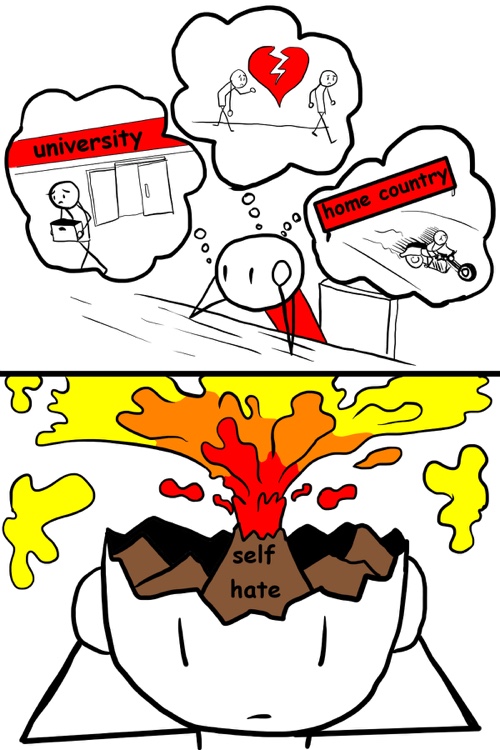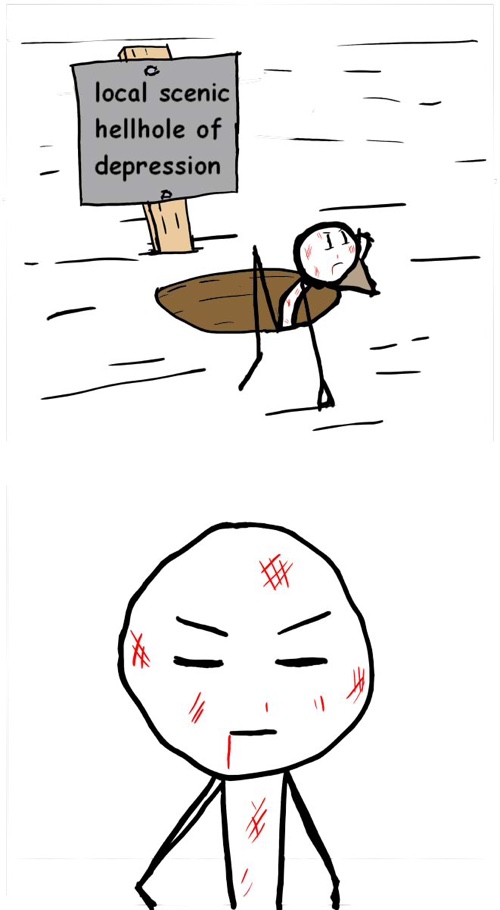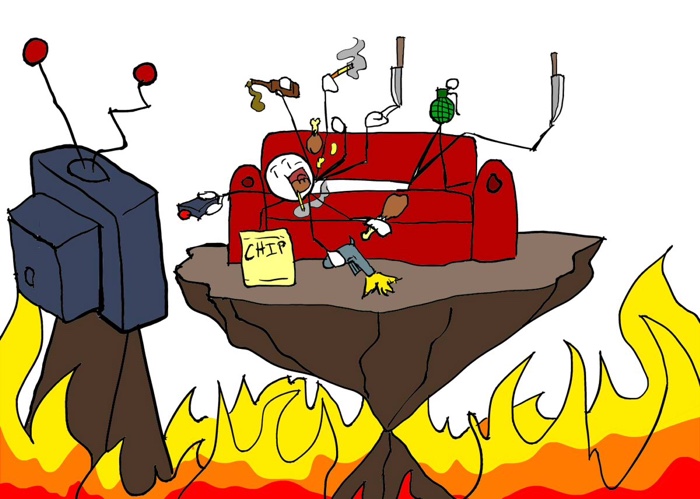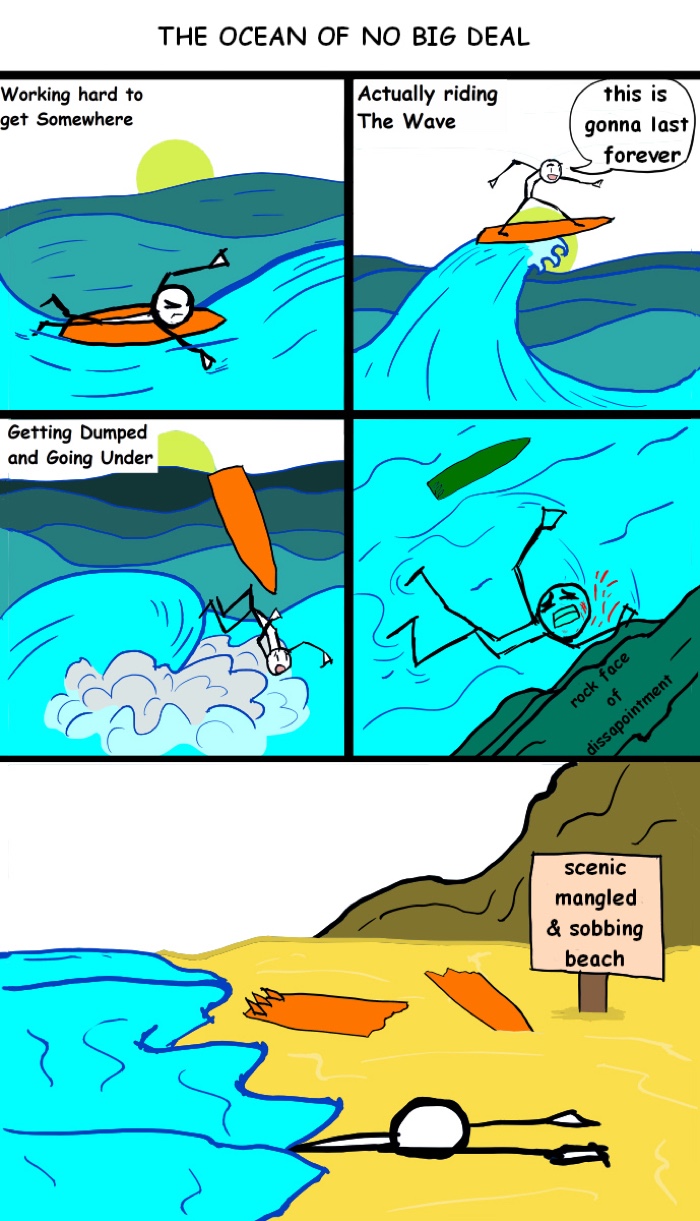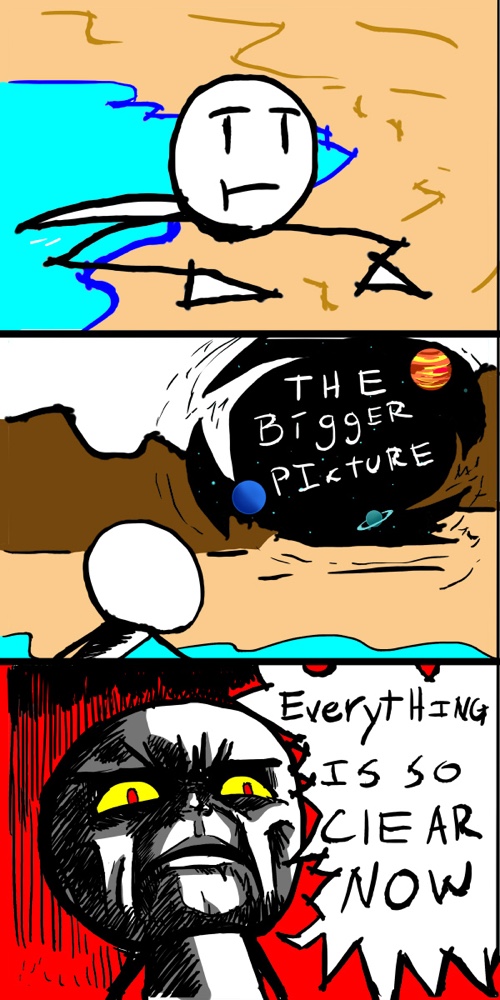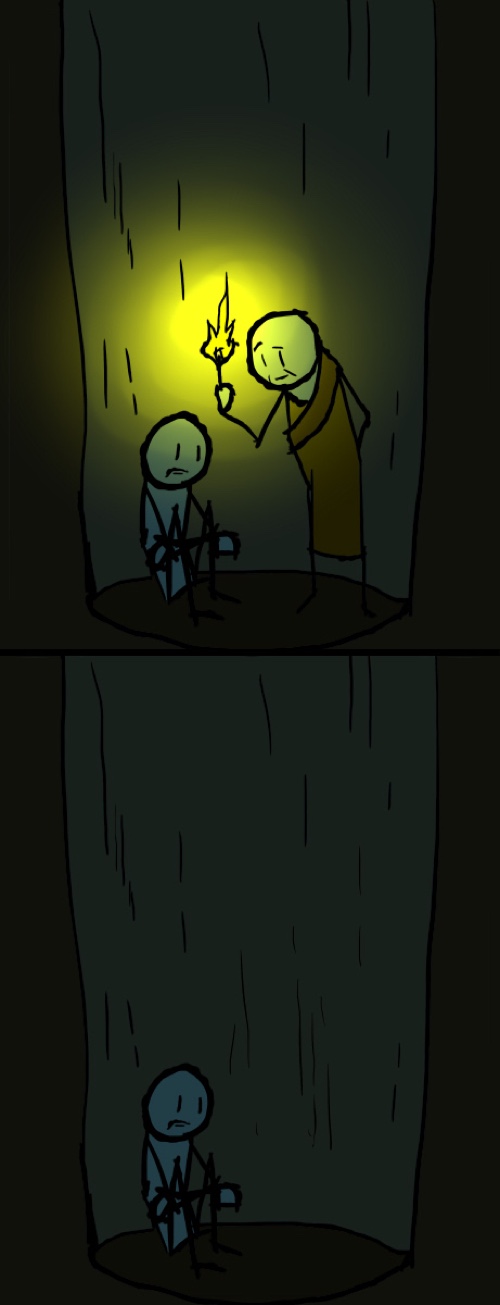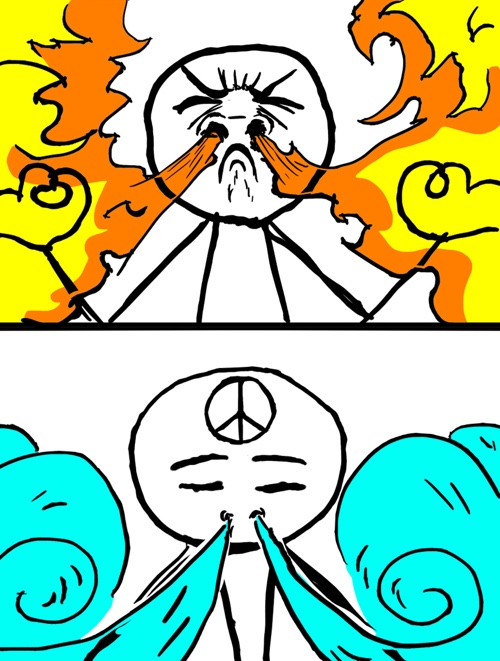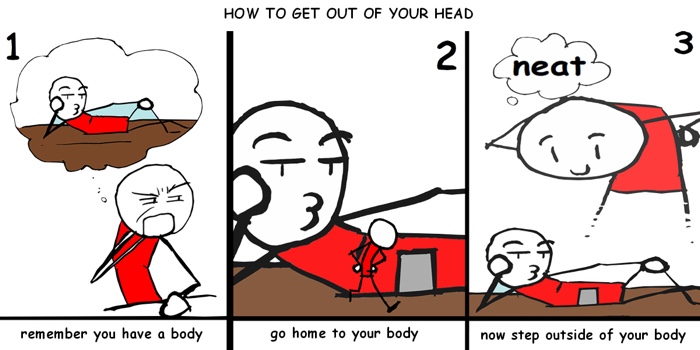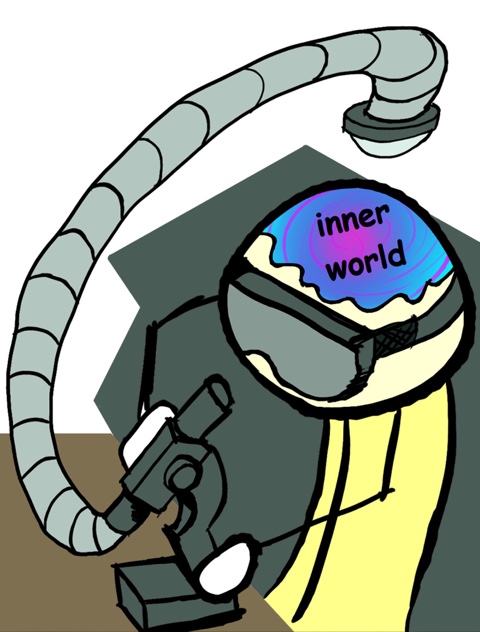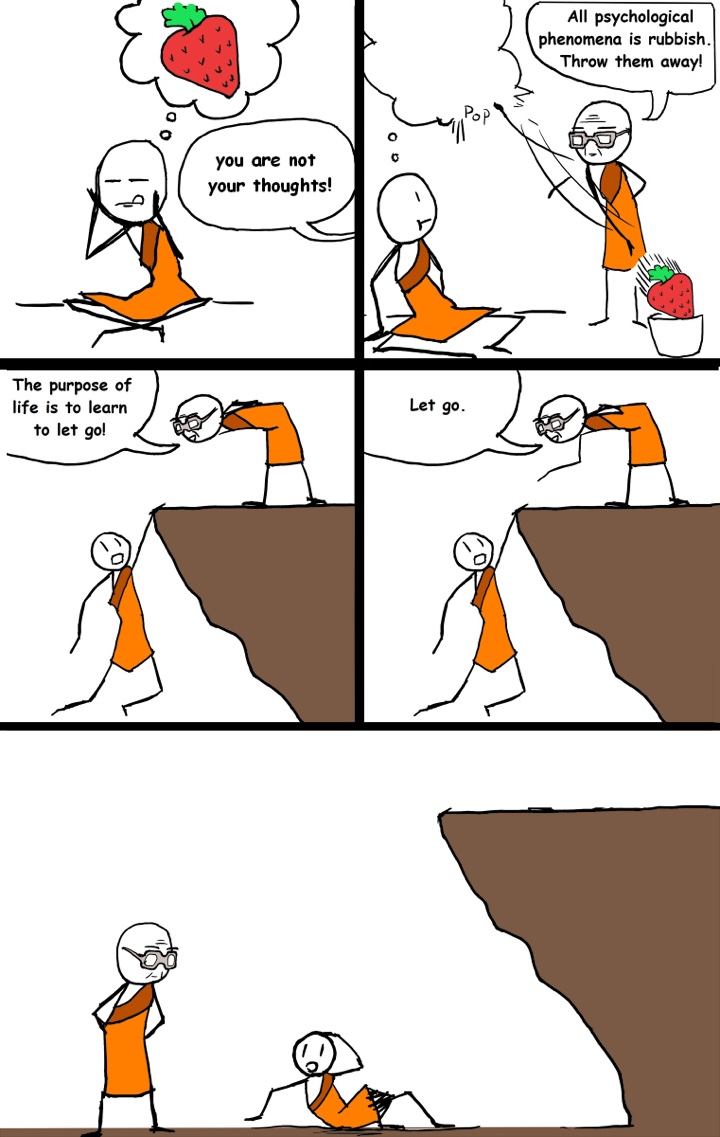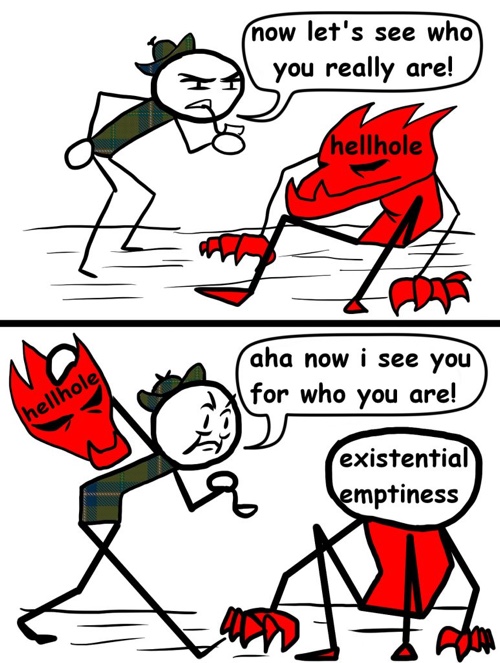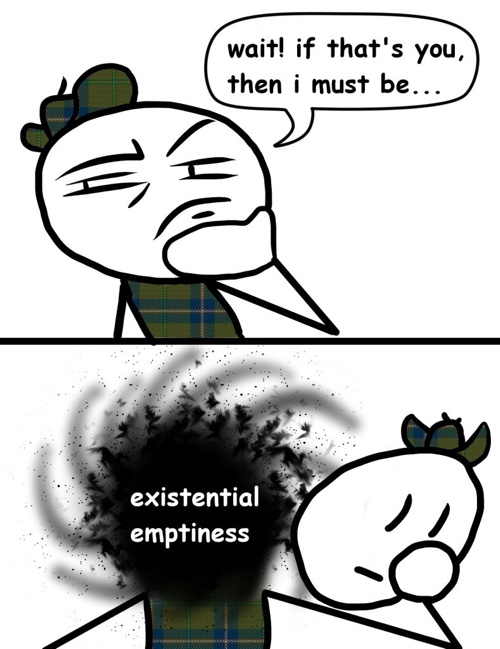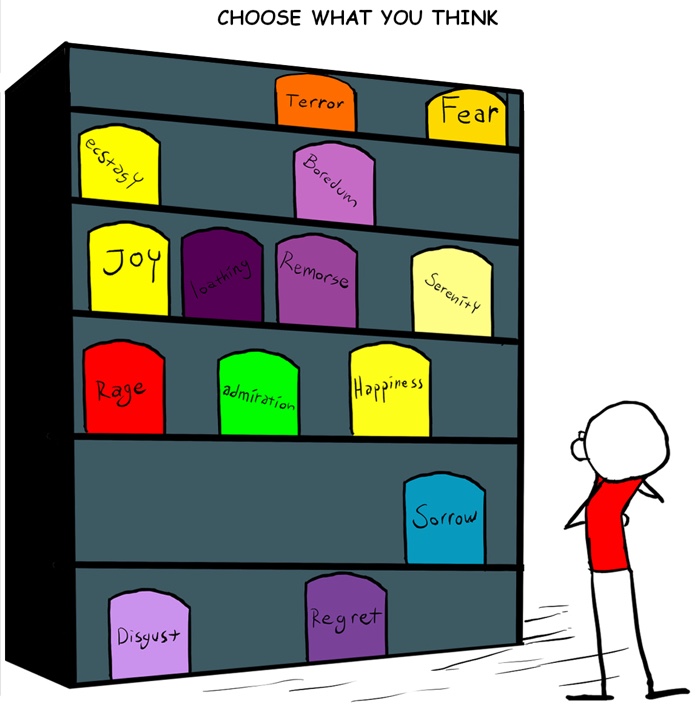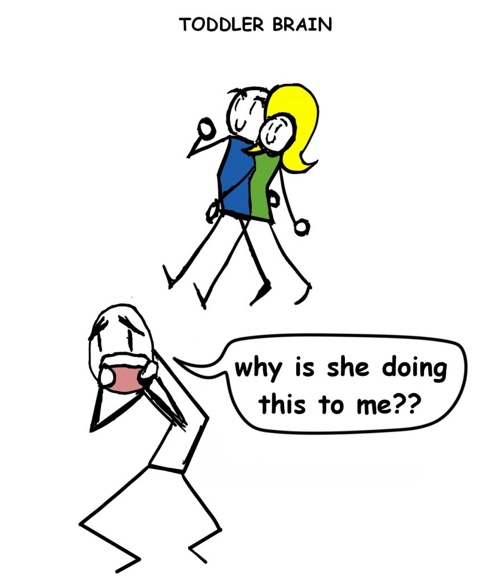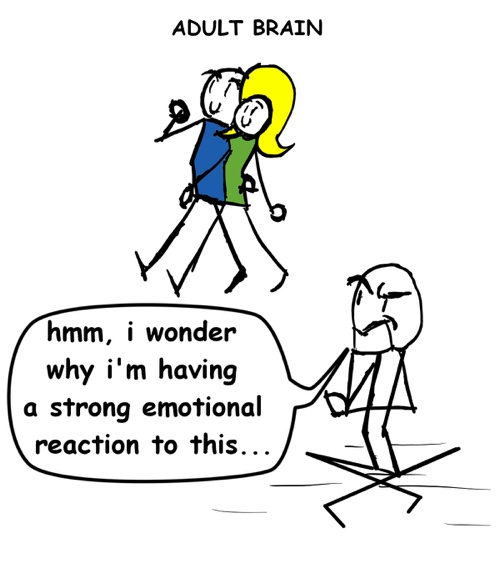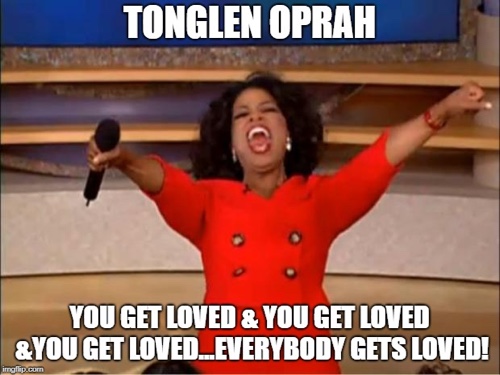I can’t possibly put my parents through outliving one of their children, can I? I ask myself, looking over the balcony of my 7th story apartment. I need help.
I’ve really had it with life at this point and I’m considering all my options.
Everyone has at least seen a hell hole of depression, and most of us have lived long enough to have been in one.
Hell holes of depression appear when we run away from, ignore or don’t understand the existential emptiness at the center of who we are.
The death of a loved one, a traumatic divorce, physical illness, injury, trauma, battling addiction, financial ruin or heartbreak are just some of the ways we end up in one of these metaphysical black holes of soul-sapping, living deaths.
A whole bunch of things come to a head rather suddenly. Within the span of twelve months, I leave a toxic workplace ending a career I love, leave a relationship with the most significant person in my life after a decade together, and leave my home country for good. To top it off, inside me lives an unending diatribe of self-hate, bubbling like a live volcano.
It takes me 5 years to rebuild myself and climb my way out of the hell hole of depression.
And these are the lessons I learn.
Lesson # 1: Stop Running
So the first decision I make when I hit rock bottom is to stop running away from the emptiness at the center of my existence.
Instead, I decide to sit with the existential hole in the center of who I am, so I can figure a way out once and for all.
I recognize that all my life I have been running away from this feeling of emptiness, numbing it in any way I can.
In my early 20s, I party, drink and smoke way more than I should, take ridiculous risks and stuff my emotions with food.
In my mid 20s, realizing what a mess thrill-seeking can make of life, I stuff my emotions with work instead. Achievement is my new thrill.
By 30, encountering my first massive failure, I’m burnt out. I’m devastated. And there’s no more running away from this high functioning depression.
The good news is, I decide to stop running. I decide to get comfortable with the emptiness at the center of my being.
Lesson # 2: Understand that Things Come Together and then They Fall Apart.
I’m listening to Pema Chodron, a Tibetan Buddhist nun. The minute she tells me that “things come together and they fall apart,” I feel like someone has struck a match to illuminate my hell hole for just a few seconds.
In those few seconds I see an ocean. Wow, she’s right! I notice how the ocean never sits still. I notice how big waves swell, gather momentum and crash on the seashore, and how they retract from the beach to do it all over again. Back and forth. Back and forth.
I can now see my life in a much bigger cosmic context than before. Losing everything I’ve worked so hard for, for no seemingly good reason, is part of the motion of life. Nothing sits still, things are in a constant state of flux.
Maybe everything isn’t my fault after all. Maybe gaining and losing, coming together and falling apart, are natural parts of the ebb and flow of life. You wouldn’t expect a wave to stay stuck at its peak, would you? Then why would you expect the same for the movements of your life? I ask.
The grief that’s gripping me loosens its stranglehold on my throat, where it’s been camping out.
As with any epiphany you have in the hell hole of depression, the reprieve you get is short-lived. The match that illuminates my mind dies and I am plunged once again into darkness.
Then Pema strikes another match. It’s a meditation practice called Tonglen.
Lesson # 3: Breathe Away Your Suffering
I close my eyes as per her instructions, and on the in-breath I imagine myself breathing in all the pain of the people suffering in exactly the same way I am, and on the out breath I send them inner peace.
It’s amazing what this psychological approach to suffering does. It means that I’m no longer held in a headlock by my sob story. For once, I’m willingly taking in the pain, not just my own but that of others as well.
On the out breath, I’m not trying to get anything for myself, instead I’m giving away inner peace to others. The genius of this is that it implies you have inner peace to give away. You can’t give away what you don’t have.
The match of insight Pema strikes for me a second time dies and I am plunged back into darkness once more. But I’m beginning to breathe. I feel my insides loosening up. I’ve given myself the space to heal this high functioning depression, simply by allowing myself to just be for once. No more running away by pursuing external goals. It’s just me and the vast emptiness now.
Lesson # 4: Cast an Anchor
But sitting with the vast emptiness can leave you dazed and confused, throwing you around like a life raft in the middle of a tumultuous ocean. And soon, I decide that I need a break from the constant feeling of not being or doing enough. So I decide to pick one thing, just one simple thing to center my life and sense of accomplishment around. Instead of trying to solve the overwhelming problem of my entire existence (career, love, belonging), all I have to do for each day to be worthwhile is workout.
If I accomplish nothing other than going to the gym in a day then it’s still a successful day, I tell myself. I go from nothing to just one simple thing.
Within a couple of weeks I notice my mood shifting. I start to look forward to something. I haven’t had that feeling for years.
At a time where I’m lost in a sea of my own self-loathing and confusion, this simple anchor gives me the lifeline and stability I need to center myself.
Lesson # 5: Remember that You Have a Body
Exercise reminds me after years of neglect that I have a body. My body is the greatest technology under the sun and the most powerful instrument I will ever own, and I hadn’t even been using it!
Before cultivating the habit of daily exercise, I lived an entirely mental life. The very definition of the hell hole of depression is that you can’t get out of your head.
No matter where I am, with friends, by myself, at the beach, in nature, in my home, in the shower, you name it, I live inside the story my mind is telling me about my life. And it’s a very unhappy story. But learning to shift my attention out of my mind and into my body is a technique I shape and hone.
When the electrifying bolts of anxiety begin to radiate throughout my body, instead of getting caught up in the thoughts that cause them, I ask “what wants my attention right now? What is asking for acceptance?” Thanks to Radical Acceptance by Tara Brach, I don’t try to figure out why I feel what I feel, because this only leads to more thoughts. Instead, my intention is to focus on my experience exactly as it is in the present.
In my 20’s I ran away from my pain of failure, rejection or alienation because I didn’t know that I had a body I could come home to. And even if I did, no one taught me how to come home to my body. Now I know to look for how a thought feels and where a feeling is located. This shift in attention allows the pain to move through more quickly and with less intensity.
Remember that you have a body. Go home to your body.
Lesson # 6: Now Step Outside of Your Body
The gym I’m at has wrap-around mirrors and for an hour every day, I see myself the way an outsider might see me. I don’t know how many years it has been since I looked at myself objectively in the third person like that.
I start to develop self-compassion and treat myself just as I would a dear friend. There’s no way I would be that hard on any other living being, so why am I being so judgmental about myself? Why am I not being a good friend to myself?
I develop a unique mental exercise to deepen my friendship with myself.
I close my eyes and imagine myself at different stages of my life. I imagine the 5 year old me, the adolescent me, and the 30 year-old me who first plunged into the hell hole of a major depression.
The four of us are seated around the table; actually 5 year old me is running around, making a lot of noise and laughing. Teenage me is worried about her appearance, she worries about what others think of her and she’s depressed because her girlfriend just broke up with her. 30 year-old me has long stopped trying to please others, but she’s in a lot of pain. She’s grieving for everything she loved and lost recently.
With my new found strength, I give 30 year-old me a hug. I know how much she’s suffering and I know that she’s choosing to do it alone, without any help. I tell her she’s going to make it. I tell her that I love her, that I understand her on a visceral level. I tell her she’s not alone, that I’m here for her.
In this meditation practice I can hold a space for myself, past, present or future. I go back to all my past selves who have been hurt in a major way and I give them love and comfort. For example, I go back to my teenage self and I put my arm around her as she sobs over that first heartbreak.
And when I feel challenged in the present, I can draw strength from my future self who has already been through my current experience. I close my eyes and I connect with her. I listen to the advice she has to give me and draw on the wisdom she provides.
Take a few months ago, for example, when I feel a strong urge to terminate a lucrative contract to pursue my own writing. I’m worried that I’m being childish and irresponsible, turning down easy money for something fanciful and uncertain. So, I take the time to enter a meditative state and imagine a conversation with my future self. She assures me that I’m making the right choice, even though it’s difficult and risky. She gives me permission to trust my heart.
These practices are the basis of a relationship I have with myself that centers on unconditional love, compassion and respect. I’ve come to understand just how large the self actually is, how much it’s capable of giving us in terms of emotional nourishment and the will to live.
Lesson # 7: Monitor Your Inner World
It takes me two years of regular gyming to come out of the hell hole of a major depression. I live in relative happiness, but I start to notice dents in my inner peace. For example, why do I avoid group situations like the plague? Why am I the first person to withdraw from conversations at a dinner party? Why do I have trouble asking for help? Why do I feel gutted when people ignore me or don’t respond to my messages? Is it true that your thoughts create your reality? Can my mind
affect matter at a distance?
In the past I was my inner world, now I see a distinction between me and it. I can actually change my inner world by watching it and by choosing something different from what I’m conditioned to do by habit.
And that’s when I decide to cast a second anchor.
All you have to do to monitor your inner world is meditate for 20 minutes a day. Just 20 minutes. Every day.
Lesson # 8: You Are Not Your Thoughts and All Thinking is Rubbish
Daily meditation introduces me to the enormity of my own being. The hell hole of depression turns out to be the infinite space of awareness that holds everything together. The hell hole was never there in the first place. It all depends on how you look at it.
At the same time, I read a book by Thai Buddhist monk, Ajahn Chah, and he mandates for me the best mind management philosophy I have ever come across.
This is what I learn from him:
- You are not your thoughts
- All psychological phenomena (i.e. everything you think) is rubbish
- You’re going to die eventually, so stop wishing for things to get better, they won’t
- If things are not going to get better then that mustn’t be the purpose of life. If that’s not the purpose, what is?
- The purpose is that you’re here to learn to let go
- Let go
At the same time I’m reading his book, I bring up the courage to ask a woman out. It turns out that I must have misread the signals from her because she has a boyfriend. I feel the sensation of being crushed rising inside me. I look to Ajahn Chah’s teaching and apply it to what I’m thinking and feeling.
I ask myself, “well, if I’m going to die eventually, then what’s the most important thing? Obviously it’s not that the woman I thought was hitting on me wasn’t. So, if it’s not that, what is?” I realize that the most important thing is for me to keep my inner peace, no matter what anyone does or says or what happens around me.
Well, if inner peace is the most important thing, it really helps to realize that you are not your thoughts, doesn’t it? Because my thoughts are making me depressed right now, it helps to let them go.
Knowing that you’re not your thoughts is the fundamental tool for wrestling inner peace out of the mouth of a volcano.
I rescue myself from my sad thoughts by also remembering that all thinking is rubbish, all of it. Not just sad or angry thinking, but happy and excited thinking.
Ajahn Chah teaches us to transcend thinking altogether. You can’t be selective about which thoughts are valuable and meaningful and which aren’t. They all contribute to the same problem, which is thinking itself. You get addicted and hooked by happy thoughts just as much as you do by sad ones. You trade the pristine, calm nature of pure awareness for these temporary, ultimately unfulfilling illusions of light and shadow, in which all sorrow and all joy exist.
You’re here to learn to let them go. That’s the journey of enlightenment.
The existential hole in the center of my existence comes to life. It is life. Eternal. Unblemished. And it’s been there the whole time. It’s always there. It’s who I am. I am the existential hole in the center of my existence.
Lesson # 9: The Seat of Suffering Is in Mental Activity
Ajahn Chah helps me localize my problems to my thoughts. This whole time I’ve been thinking about my problems as existing in the world out there, now I realize all my problems are a result of how I think. And how I think is far easier to manage than things that are not inside my head.
It’s true. I am creating my own reality with my thoughts. I have a responsibility to create wisely because I have a choice.
I have a choice in what I think about the situation with the woman I thought was flirting with me. I have a choice in interpreting her intentions, and a choice in what I think of her and how I respond.
I can tell myself her intentions were malicious, or I can tell myself her intentions were playful and harmless, or that her intentions were friendly, or that she didn’t intend anything at all. I can tell myself that she is mean, deceitful, or confused, or potentially unfaithful. But nothing I tell myself captures the truth of who she is adequately enough.
I realize that my internal representation of the situation is not the same as the situation itself. I also realize that my internal representation is fraught with inaccuracies, distortions, errors and my own bias. I really don’t know what was going on in her mind when this misunderstanding happened. So, how do I choose to respond in this situation?
I choose to respond wisely. I begin by recognizing that how I feel as a result of our interaction is my responsibility, not hers. I choose to accept my feelings of hurt and to investigate why I feel hurt. For example, I imagine someone else in her shoes. What if a man had made a pass at me and turned out to be unavailable, would that upset me? Not even slightly. I wouldn’t even think twice about it. So what is it about this particular situation, with this particular person that elicits the feelings of hurt in me? I soon realize that the part of me that’s hurt is the same part of me that’s attracted to her. The one who’s attracted is the one who suffers. So I turn to other parts of me, the parts of me that aren’t attracted, to shed light on the situation.
Using my logical mind, I choose to see that I am creating my own suffering by how I perceive this. I could just as well be telling myself that I am so irresistible that even a straight woman in a relationship couldn’t help but make a pass at me! And why aren’t I telling myself that?
I choose to recognize that my perception of the situation is neither accurate nor is it the situation itself.
I’m really glad I don’t choose to act like a big baby and respond gracefully instead.
Lesson # 10: Upgrade Your Toddler Brain
We all have a emotional reaction patterns that are the result of childhood conditioning. Neuropsychologist Steven Stosny calls this The Toddler Brain. We can live our whole lives reacting to life and situations with the same emotional intelligence we had when we were toddlers, unless we become aware of this and choose to change it, one reaction at a time.
Let me show you an example:
When I was six years old, my mother took me to the supermarket. Before we walked in she looked me in the eye and said “please don’t ask me to buy you anything. We’re just going in there to get one thing and that’s it. Please!”
“Ok,” I said and I remember being sincere about it.
But once I was in there, a toy caught my eye. Selfishly, I decided I wanted it. Abandoning the promise I made moments earlier, I grabbed the toy and asked my mother to get it for me. At first she said no, but I insisted and then my insistence turned into a full-blown tantrum.
Soon enough there wasn’t anyone left in the supermarket who couldn’t hear me crying. Embarrassed within an inch of her life, and in the interest of reducing noise pollution, my mother bought me the toy.
This is the toddler brain in action and what we don’t realize is that we take this same emotional brain with us into adulthood. We continue to expect that if things don’t go our way, or if we don’t get what we want, that having an emotional melt down is going to help us in some way.
When life says “no, you can’t have what you want” to me, even at age 30 I have the same emotional reaction as my toddler self. I get really upset, I cry a lot, I protest. I don’t think to myself “oh, oops, things come together and then they fall apart, that’s too bad. Now what should I do?” I don’t shrug my adult shoulders, I get locked in my toddler logic that the world should meet my expectations.
The only problem is life is not your mother and it doesn’t care no matter how much you cry over something. Instead, life will let you cry and wail all you want, until you die crying or allow yourself to start growing up. It’s your choice.
Lesson # 11 Understand The Life Cycle of Expectations
When I start thinking with my Adult Brain, I realize the mistake I keep making is nearly always the same.
The reason I got upset about the woman flirting with me, is that I created an expectation that her flirtation was going to lead to something. And when she failed to meet that expectation, when the outcome went against my sense of entitlement that reality should bend to my will, I had a negative emotional response.
As an adult, I come to understand how I can nip suffering in the bud, before it even starts, by being aware of the expectations I create and then letting them go. Creating expectations is not the problem, but becoming attached to them is.
Faced with the same situation again, I might take pleasure in being paid a special kind of attention by a woman but would stop short of developing an expectation of what that attention should mean or what it should lead to.
The Lifecycle of Expectations
Lesson # 12 The Importance of Cultivating Loving Kindness
My Adult Brain now realizes it has a toddler inside it. I don’t hate the emotionally infantile parts of myself. I love them, because I love myself unconditionally but I don’t let the toddler in me hate people who upset me either.
Nowadays, when someone really pisses me off, and I feel like I hate them, I close my eyes and think well of them. This is a form of Tonglen that I also learn from Pema.
I imagine the person inside my mind’s eye and I send them and our tenuous relationship, healing. I send them love. This practice changes something in me, and it prepares me to deal with them compassionately next time we meet. That in itself has transformed situations and people like magic in my life. And it doesn’t just work for me.
One of my students was having trouble with coming out to her mother and asked me what I would do in her situation. I told her that I would close my eyes for 2 minutes each morning, imagine my mother in my mind’s eye and send her peaceful loving thoughts, no matter what I was thinking about our arguments or the rift between us. Amazingly, when my student took on the practice, she was able to get through the turbulent situation with her mother sooner than she expected.
Since realizing that my Toddler Brain ran the show for the first decade of my adult life, I’ve gone back in my mind to all the times I could have responded better to people and situations. I see all the mistakes I’ve made with people and the unnecessary messes I made by reacting like a big baby. I apologize to each person or situation I bring up inside my mind, I forgive myself and I let the memory go.
Lesson # 13: Continuous Improvement
It turns out that the hell hole of depression is actually the same as the existential hole at the center of who we are. They’re the same thing. The existential hole becomes a hell hole when we forget that it is who we are. Ultimately, we’re nothing. And that’s great news!
It takes special care and attention not to fall into the hell hole of depression and I keep track of this hazard by continuously monitoring and improving my mind. I do this by practicing something Daniel J. Siegel calls Mindsight. One key aspect of mindsight is the continuous observation of the self, so that we can keep improving, so that we can continue to upgrade the outdated parts of our emotional hardware.
I’m very grateful to say that I’ve scaled the walls of the hell hole of depression. But, since it’s never too far away, I recognize that I’m always a work in progress.

